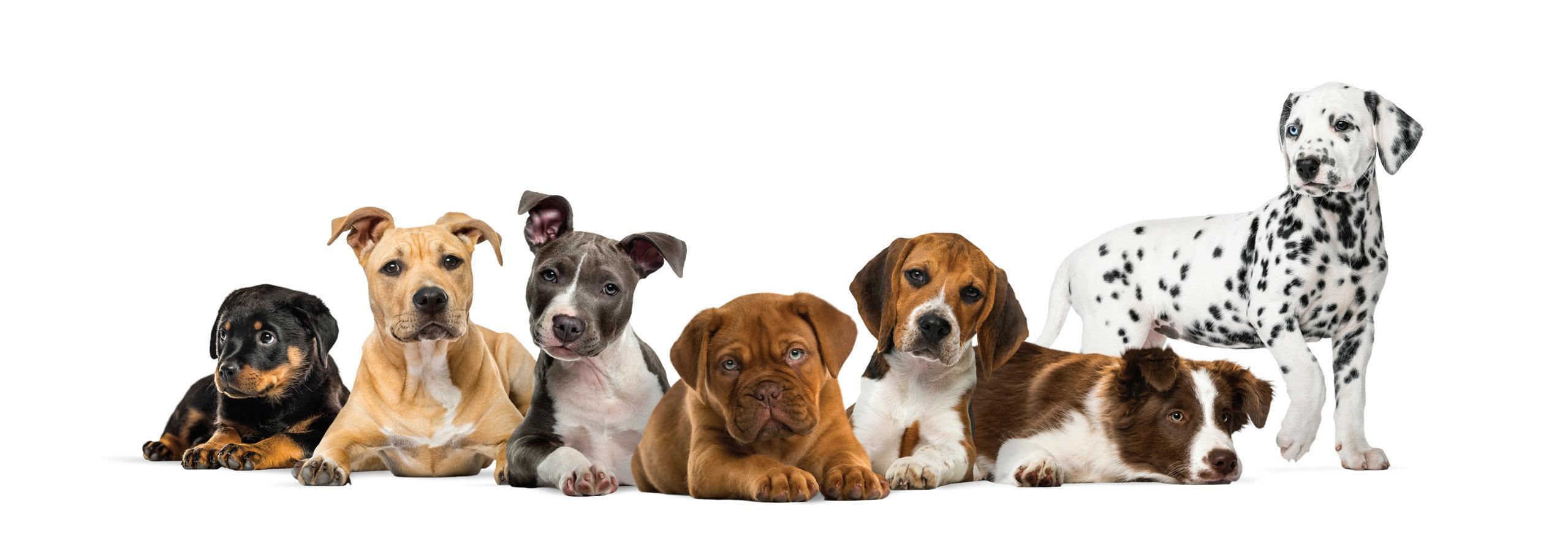
6 minute read
Paw Quarterly • Winter 2023
ASKEM – Q & A

Advertisement
Have questions?
Let us help you find the answers.
For a chance to have your questions answered by a professional in the next issue of PQ, email askem@pawquarterly.com.
Q: Help! My dog is driving me crazy! He is so hyper! How do I get him to calm down?
A:
Before jumping into any training, it’s important to make sure your dog is getting their needs met. Ask yourself these 3 questions.
#1
Has my dog had the opportunity for 30+ minutes of quality exercise today, like running around the yard an tugging? If not, chances are you need to exercise his body!
#2
Has my dog had the opportunity to use his brain for 30+ minutes today? Mental enrichment is a necessary part of your dog’s life, spend some time on mental activities to benefit your dog.
#3
Has my dog been trained to relax? If you’ve done your physical and mental exercise you need to ask yourself if your dog needs training to relax.
Training relaxation!
All dogs rest at some point in the day, but often can’t rest when we’d like them to. Providing their mental and physical needs have been met, start by having your dog on leash, for about 30 minutes. Watch an episode on TV or read a book while they are tethered to you.
With a minimum amount of space, they will learn they can not be bouncing everywhere and when you are sitting, it is time for them to relax nearby.
If you don’t want them at your feet, you can tether them to something sturdy near their dog bed. The first few times your dog will likely keep trying to get away. Do not be deterred. Stay calm and ignore any annoying behaviors. Most dogs will learn to settle within a week or two. Once they have strong settle behavior on leash, you can transition to dropping the leash to see if the manners are maintained and eventually doing the activity off-leash.
Keep indoors free of exciting games like fetch, tug or rowdy play with human or animals siblings so that your dog starts to understand outside time is for fun shenanigans, and indoor time is for calm relaxation.
Q: My dog jumps all over my guests! How can I stop him from doing that?
A:
Training is happening all around us. The more your dog jumps on people, and likely is getting the attention they want, the more history and reinforcement is being built that JUMPING WORKS. Jumping is a very normal and biological behaviour, changing established behaviours can take time, but can be reduced or eliminated with training.
Things you could try are... Put your dog outside or away until everyone has entered.
Often the biggest excitement is right at the beginning. Once everyone is settled, give your guests instruction on what to do if the dog jumps, and then let the dog in.
Use a leash!
We can control our dog much better on leash and take away opportunities for them to make mistakes. By using a leash you can keep your dog out of the way and limit contact. When your dog is able to settle down and your guests are settled in, you can then start interaction.
Don’t move to interaction before your dog is mentally calm. That may mean several people coming over without any contact before you can get to the stage of contact. Taking your time to get it right is okay.
Practice your routine even if there isn’t anyone to jump on!
Whether that’s putting your dog away first, or leashing them before opening the door, practice the steps several times before people come over.
Tether train your dog.
Often if you have your dog bed right near the tethwer, the dog will learn to stay on their bed. By using a tether, even if they make a mistake and got up, they can’t jump on anyone. Train the tether before you need it. Dogs need to learn they can only move in a certain area and to calm down in that area. When the dog has been able to settle down on their tether, then we can unhook them.
A really, really good stay.
Train a place cue, but be prepared to train and maintain it. This can be difficult when we have guests, as our attention is often divided. This can be more time consuming, but once trained, the dog can manage the behavior without too much help from you.
Explore the options and figure out what will work for you. Change doesn’t happen overnight, but with some consistency, you can expect to see a reduction of the behavior over time.
Q: It’s Winter and my dog has lots of Cabin Fever! How can I tire him out in such cold weather!
Saskatchewan certainly isn’t for the feint of heart, whether human or dog! While outside might be too cold for us to manage, here’s a few things to consider for training and exercise over the cold months.
• Brain games, which includes training tricks or obedience, and puzzle toys.
• Attend a day of daycare to get the zoomies out.
• Rent a building for an hour or two - with friends if you want!
• Teach your dog to use a treadmill.
• Provide more chewy/toy options and rotate toys every couple of days to keep them exciting and new.
• Check out more ideas on page 7 on beating the boredom.
In a few short months we’ll be back to nicer weather! Best wishes in holding down the fort until then!
Emily Garland, CPDT-KA, MFA Trainer and Behaviour Specialist

Any information contained in this section are suggestions on different training techniques to try. For advice specific to your dog consult a trained professional.





